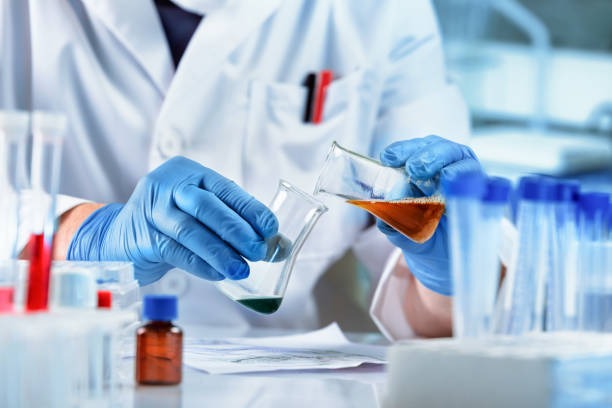
COSMETIC PHYSICO-CHEMICAL ANALYSES
Cosmetic physical and chemical analyses are a series of tests and analyses performed in a laboratory environment to evaluate the composition, properties, quality, stability, and safety of cosmetic products. These analyses are important to verify product compliance with legal regulations and standards, guarantee product quality, and ensure consumer safety.
Scope of Cosmetic Physical and Chemical Analyses:
These analyses can generally be divided into two main categories:
1. Physical Analyses: Evaluate the physical properties and appearance of the product.
Appearance: The product's color, odor, consistency, homogeneity, and general appearance are examined.
pH Determination: The degree of acidity or alkalinity of the product is measured. It is important for compatibility with the skin.
Viscosity Determination: The product's resistance to flow (consistency) is measured. Determined using different types of viscometers (Brookfield, Cone/Plate, etc.).
Density Determination: The mass per unit volume of the product is measured. Determined using pycnometers or digital density meters.
Melting Point Determination: The melting point of solid or semi-solid products is determined.
Boiling Point Determination: The boiling point of liquid products is determined.
Refractive Index Determination: The light refraction property of the product is measured. Determined using a refractometer.
Particle Size Analysis: Particle size distribution is determined in products such as powders and foundations. Methods such as laser diffraction or microscopy are used.
Stability Tests: These are carried out to evaluate whether the product maintains its physical properties (appearance, color, odor, viscosity, pH, etc.) throughout its shelf life. These tests are performed in the form of accelerated aging (storage under high temperature, humidity, light) or long-term stability tests.
Packaging Compatibility Test: It is carried out to evaluate whether the product interacts with its packaging and the packaging's ability to protect the product.
Determination of Sedimentation Rate in Suspensions
Phase Separation Control in Emulsions
Fracture/Disintegration Tests in Pressed Powders
Pressure and Spray Tests in Aerosol Cans
Yield Point Determination
Instruments and Methods Used:
HPLC (High-Performance Liquid Chromatography): Used to separate and analyze liquid mixtures into their components.
GC (Gas Chromatography): Used to separate and analyze volatile compounds.
GC-MS (Gas Chromatography-Mass Spectrometry): Used to identify and quantify the compounds in a mixture.
Spectrophotometers (UV-Vis, FTIR): Enable analysis based on the light absorption and transmission properties of substances.
AAS (Atomic Absorption Spectrometry): Used for metal analysis.
ICP-MS (Inductively Coupled Plasma Mass Spectrometry): Used for trace element analysis.
pH Meter: Used to measure the pH value of liquids.
Viscometer: Used to measure the viscosity of liquids.
Refractometer: Used to measure the refractive index of liquids.
Karl Fischer Titrator: Used to determine water content.


2. Chemical Analyses: Evaluate the chemical composition and content of the product.
Active Ingredient Quantification: Determination of the amount of active ingredient (e.g., moisturizer, antioxidant, UV filter) in the product. These analyses are usually performed using HPLC (High-Performance Liquid Chromatography), GC (Gas Chromatography), or spectrophotometric methods.
Preservative Quantification: Determination of the amount of preservatives (e.g., parabens, phenoxyethanol) that protect the product against microbial spoilage.
Heavy Metal Analysis: Determination of the amount of harmful heavy metals such as lead, mercury, arsenic, and cadmium that may be present in the product. Instruments such as Atomic Absorption Spectrometry (AAS) or ICP-MS (Inductively Coupled Plasma Mass Spectrometry) are used.
Free Fatty Acid Determination
Saponification Value Determination
Peroxide Value Determination
Iodine Value Determination
Fragrance Analysis: Identification and quantification of fragrance components using Gas Chromatography-Mass Spectrometry (GC-MS).
Allergen Analysis: Detection and quantification of substances that can cause allergies (e.g., certain fragrance components, plant extracts) in the product.
Analysis of Undesirable Substances: Detection and quantification of substances that should not be present in the product or should be below certain limits (e.g., phthalates, 1,4-dioxane).
Water Content Determination (Karl Fischer Titration): Determination of water content, especially in anhydrous formulations.
Active Substance Quantification: Determination of the amount of the active ingredient that should be present in the product and provides the effect.
SPF (Sun Protection Factor) Determination: Determination of UV protection efficacy in sunscreens using in vitro or in vivo methods.
UVA Protection Factor Determination: Determination of UVA protection efficacy in sunscreens using in vitro or in vivo methods.
Inorganic Substance (Ash) Content Determination
Contact Us for Your Cosmetic Physical-Chemical Analyses.
We offer affordable and effective solutions tailored to your needs.
The information presented on this website does not constitute legal advice and is intended for informational purposes only. KompassEurope.com.tr assumes no responsibility for any errors or omissions in the information contained on this website. Any decisions made or actions taken by the reader based on this information are solely at the reader's own risk, and KompassEurope.com.tr shall not be held liable for any legal consequences arising from such decisions or actions. Readers are strongly advised to seek professional legal counsel regarding their specific circumstances and concerns.
© 2025 Kompass Europe. All rights reserved. The contents of this website belong to Kompass Europe and are protected by copyright laws. Copying, publishing, distributing or any commercial use of the information on the website is possible only with written permission. By using this site, you agree to our Terms of Use and Privacy Policy.
